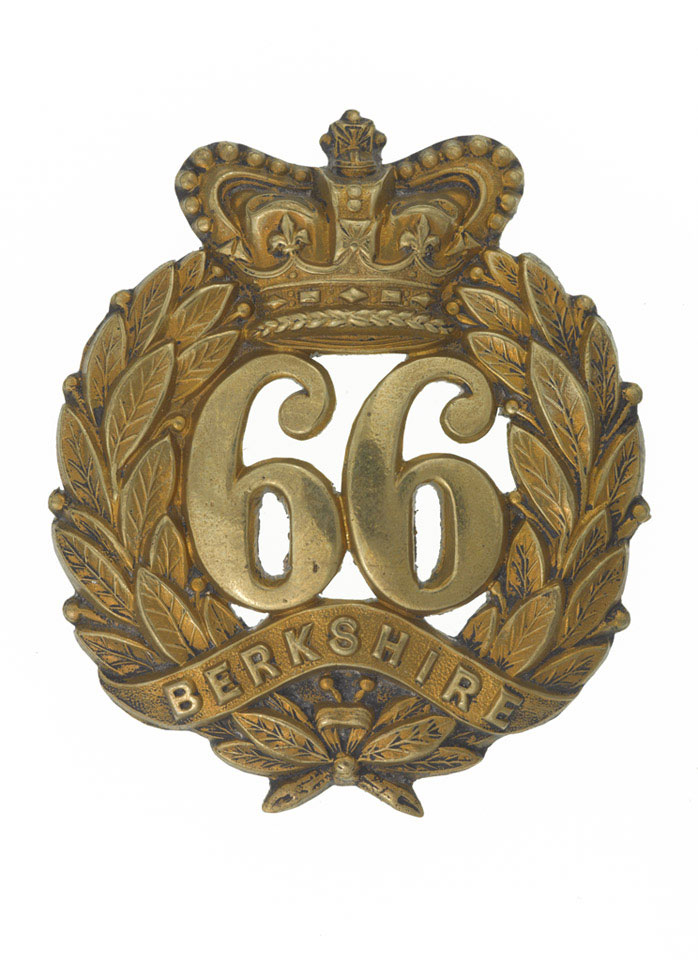
Online Collection
« Prev - 1 of 1 results - Next »
Glengarry badge, other rnaks, 66th (Berkshire) Regiment of Foot, 1874 (c)
Brass badge in the form of the regimental number, '66', surmounted by a crown, within a wreath with a scroll bearing the title, 'Berkshire'.
This regiment was raised as the 2nd Battalion of the 19th Regiment on the outbreak of the Seven Years War (1756-1763). It became an independent unit, the 66th Regiment of Foot, two years later. The regiment's territorial association with the county of Berkshire was officially established in 1782. This association eventually earned them the nickname 'The Brave Boys of Berks'.
In 1803, the regiment raised a 2nd Battalion. This remained in Ireland until 1809, when it was sent to the Peninsular War (1808-1814). Its service there included the battles of Douro (1809), Talavera (1809), Albuera (1811), Vitoria (1813), Nive (1813) and Orthes (1814). At Albuera in May 1811, it lost its colours and all but 52 of its men.
The 66th raised a new 2nd Battalion in England, which sailed to St Helena in 1816 to guard the exiled Napoleon Bonaparte. In 1817, it was joined on the island by 1st Battalion. The two battalions merged later that year, remaining on St Helena until Napoleon's death in 1821. Six of the regiment's grenadiers formed part of his burial party.
Over the next 20 years, the 66th returned to Ireland, Canada, Gibraltar and the West Indies. In 1857, it moved to India, where it remained for eight years. In 1868, it was back in Ireland once again, but only for two years. In 1870, the regiment returned to India for 11 years, a posting which included the 2nd Afghan War (1878-1880). During that conflict, six companies of the regiment were almost annihilated at Maiwand in July 1880 and the regimental colours were lost.
NAM Accession Number
NAM. 1963-09-392-1
Copyright/Ownership
National Army Museum Copyright
Location
National Army Museum, Study collection
Object URL
https://collection.nam.ac.uk/detail.php?acc=1963-09-392-1

